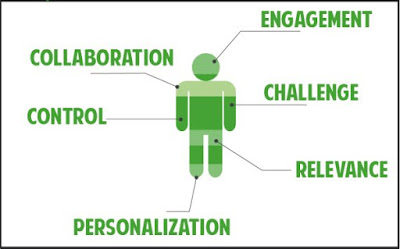An important technology that could have a very credible impact on E-Learning is virtual reality technology and augmented technology. At the recent CES show in Las Vegas, Nevada, Juniper Research declared that 2016 will be the "watershed year" for virtual reality technology.
It was also predicted that 2016 would see the launch of Oculus Rift (Facebook), the first consumer level virtual reality headset that does not require a Smartphone like Google's Cardboard and Samsung Electronics Gear VR.
HTC predicts that its HTC Vive will represent a technological breakthrough in Virtual Reality, projected to be introduced in April 2016. It was also revealed that Audi will be installing Vives in pretty much all of its flagship stores to offer virtual test drives of their products.
To state that technology companies are "jockeying to position themselves to capitalize" on the evolving technology scene would be gross understatement!
So, the obvious question, with regards to E-Learning, that needs to be asked is:
 | |
| Credit: www.cleveland.com |
 | |
| Credit: www.time.com |
 |
| Credit: www.geekwire.com |
So, the obvious question, with regards to E-Learning, that needs to be asked is:
"Is Virtual Reality ready for prime time as a tool to make learning experiences irresistibly engaging and capture the essence of being in an immersive learning environment?"
The technology companies would have you believe that in 2016, the year of Virtual Reality, that this would be a "slam dunk" for the affirmative. Of course, their answer is slightly skewed by their motives.
What Needs to Be Done to Slave This Technology to E-Learning
As mentioned in the previous post, it is incumbent upon us who are involved in ID and instruction, not to let the "tail wag the dog". Instead, the "tail needs to be customized" so that it performs according to the requirements of a new adaptive and agile pedagogical mindset. Interestingly enough, the primary purpose that many of the new virtual reality technologies are designed for, games and entertainment, provide important clues as to what the focus of our design efforts should be. What we are learning about the immersive techniques of serious games and the thoughtful engagement that they promote can find the most productive application in E-Learning.
 |
| Credit: www.thevideoink.com |
The evolution of the web's "Second Life" has shown us that we can develop an immersive community of learning and diversity that is representative of the human condition and its aspirations. It has also shown us that there is great potential in the development of collaborative learning networks that span the globe.
If this is true, then what needs to be done?
Some Ideas
Unlike, the various business and entertainment initiatives, use of such technologies in E-Learning is different because in education, we strive for "equity of access" for learners. In the past, technology marketers such as Microsoft & Adobe to name two, have made a good effort to make equity of access possible with education plans tailored to the education market. With regards to the use of these new technologies in E-Learning these initiatives need to be continued. I would suggest that given the fact that we are in an information and learning age that such initiatives should be extended to help improve the learning cultures within the business sector.
 |
| Credit: www.thenextweb.com |
- Human physiological data is needed that will reveal the effects that such technology has on the human body system. For example, in early reports on the use of Oculus Rift users experienced headaches and dizziness after a prolonged use. More research data is needed before we design learning experiences using the new virtual and augmented technology environments. The obvious question, among a number, to ask is: "What is needed adaptation time needed for the human body to achieve biological synchronization with these new technologies and environments?"
- With regards to designing irresistibly engaging learning experiences that seek to harness the power of these new technologies, we need to focus on the elements that are most engaging to learners. "Story telling" that involves the learner as an active participant in how the story develops and proceeds is an effective way to maintain learner engagement in what they are learning. This is a lesson that we have learned from observing "gamers" who take on roles within a story which is defined by the choices that they make and act on. Recurrent and immediate feedback during the evolving story is an important element.
- The immersive element of virtual and augmented technology should appeal to as many of the human senses as possible and should be a social experience when used in a learning experience.
It is important to remember that the goal that we strive for in regards to our learners is that they would achieve a deeper, sustainable learning that is driven by intrinsic motivation more and extrinsic motivators less. Learning needs to be a social experience that is collaborative and fun but also meaningful and challenging. Without the challenging aspects, we can not spark creative and innovative problem solving of real world problems.
Next...getting away from the culture of multitasking and closer to making use of each others gifts in collaborative networks.










